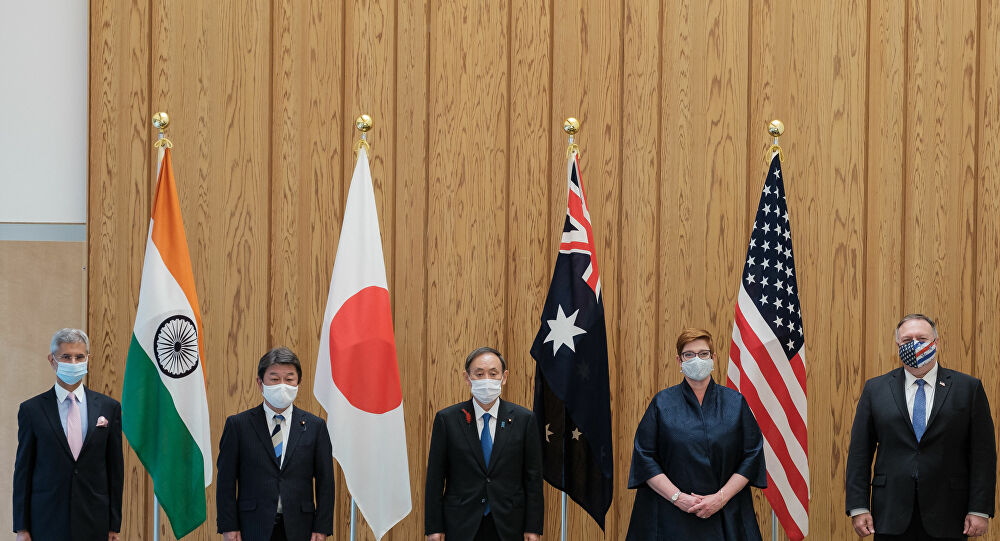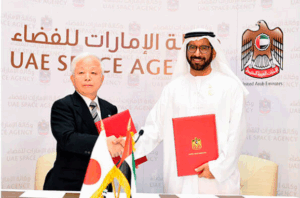This article was written in collaboration with Prof. Yoichiro Sato. A professor of International Relations and Asia-Pacific Studies at Ritsumeikan Asia-Pacific University, Japan, Prof. Sato has also taught at the US Department of Defense’s Asia-Pacific Center for Security Studies. He has published more than ten academic books in international relations, foreign policy, and comparative politics and is a frequent media contributor globally. He holds a BA in Law from Keio University, a MA in International Studies from the University of South Carolina, and a PhD in Political Science from the University of Hawaii.
China’s increasing assertiveness over the years in the Indo-Pacific has resulted in the Quadrilateral Security Dialogue (“Quad”) states – Japan, Australia, India and the US – reviving the Quad 2.0 in 2017. However, despite meeting eight times since then – including two ministerial level meetings, one of which was held most recently in Tokyo – the Quad 2.0 still lacks an institutionalized structure. Additionally, to a certain degree one is yet to see concrete outcomes on a number of core Indo-Pacific issues.
Japan, which under former Prime Minister Shinzo Abe was the initial proponent of this multilateral initiative, has worked hard to deepen security ties with the Quad 2.0 states such that it could also complement Japan’s policy of a Free and Open Indo-Pacific (FOIP). On the other hand, the dilemma for Japan arises as it has to walk a fine line with regards to its very important economic relationship with China, especially now amid the growing Sino-US tensions.
As the Indo-Pacific economies and geopolitics within it evolve at a rapid pace, the prospects and challenges that Japan faces with regards to the Quad 2.0 can be summarized in three dimensions. First, can Japan facilitate and/or proposition a way to coordinate military defense policy among Quad states, despite its own limitations to performing active collective security? Second, can Japan harness the visibly differing objectives between the region’s middle powers and the US? Third, can Japan leverage competition in infrastructure and connectivity projects in South and Southeast Asia to create greater multilateralism in the region?
Coordination of military defense policy amongst Quad states
When Prime Minister Abe initially proposed the Quadrilateral Security Dialogue in 2007, its overtly security-focused nature was widely perceived as “containment” of China. The Chinese government issued formal diplomatic protests and eventually, under intense lobbying from China, India and Australia pulled out by early 2008. Fast forward 13 years, despite increasing common ground, it is clear that the Quad states still have differing perceptions of and interests in security and defense policies for the region.
For example, depending on which country’s perspective, and/or even which department within each country, the Quad may be viewed fundamentally as a maritime concept. The Japan Maritime Self-Defense Force’s view is similar to that of the US Navy, and their shared view largely represent the US-Japan Defense sector. However, Japan’s Ministry of Economy, Trade and Industry (METI) and Ministry of Foreign Affairs (MOFA) have diverging views, leaving room for China in their visional community for inclusiveness.
In seeking to unify these differing perceptions, over the years, Japan has sought to build capacity in South and Southeast Asian states’ maritime security such as the provision of vessels, Coast Guard training, and coordination mechanisms through bilateral and even trilateral cooperation partnering with the US, India or Australia. However, in the area of security cooperation, Japan still needs more coherent policies regarding what its armed forces will actually be able to do with the other Quad countries, beyond occasional joint exercises and training – such as the recent Malabar 2020 exercise.
Tokyo will also have to walk a fine line on the subject of China, balancing its desire to confront Beijing over a range of security and territorial issues with its intertwined economic interests in China. Additionally, Prime Minister Yoshihide Suga needs to think through how Chinese pushback (and/or retaliation) against quadrilateral cooperation might affect each of the four countries’ attitude toward the Quad.
US and middle power objectives
China’s economic linkages with each of the Quad members and other Asian countries vary in quantity and quality. This complexity is compounded in part in dealing with China’s economic influence in the Indo-Pacific region.
The US, as the destination of a broad range of Chinese manufactured products and itself the exporter of high-end manufactured goods and agricultural commodities to China, tend to see trade with China as substitutable. Japan, with voluminous exports of machine tools and electronics components to China, sees its economy as deeply integrated with China’s and thus vulnerable to secondary effects of the Sino-US trade war. Australia’s heavy reliance on commodity exports to China and inflows of students and tourists from China has repeatedly shown the country’s vulnerability to Chinese political influence campaigns. India’s border clash with China in 2017 and 2020 have significantly strained Sino-India ties, yet China has emerged as India’s biggest trade partner in the first half of financial year 2020-21.
Additionally, and importantly, many of the ASEAN states also fear that tensions in the region will place them in the difficult position of having to choose between their economic benefactor China and the US. The objectives of the region’s middle powers and those of the US are thus not aligned. Furthermore, implications of a Biden administration for the region and multilateralism remain unclear.
Competition in infrastructure and connectivity projects in South and Southeast Asia
The abundance of Chinese money, creating debt by bankrolling white elephant projects through its Belt and Road Initiative (BRI), has resulted in wariness among the Quad states, which are now looking to mutually cooperate to challenge China’s BRI infrastructure drive in the Indo-Pacific region, especially in Southeast Asia, South Asia, and the South Pacific.
With its Partnership for Quality Infrastructure in 2015 and the follow-up Expanded Partnership for Quality Infrastructure in 2016, Japan has by far been the leading proponent of quality infrastructure projects in the region – competing while collaborating with China’s BRI. However, the lack of disposable resources to match the sheer amount of investment that the BRI has pledged on infrastructure is a major challenge.
As such, the Quad states have been stepping up their infrastructure investment individually, bilaterally, and trilaterally. For example, India and Japan have developed the 2017 Asia-Africa Growth Corridor, Japan, the US and Australia have launched in November 2019 the Blue Dot Network, and Japan also signed a new infrastructure agreement with Europe last year to improve connectivity between Europe and Asia.
While the recipient states – especially smaller nations – of infrastructure aid are welcoming alternative sources of investment, believing they can bargain more to their advantage, challenges remain. For example, the US ideological opposition to large concessionary infrastructure loans puts limits to the Quad efforts. Additionally, in many of the joint projects mentioned above, tangible outcomes are yet to be seen.
As the Quad 2.0 re-builds its second momentum, enmeshing it into the Indo-Pacific should ensure that it does not develop into a US tool to merely bolster its interests in the region against China. At the most recent Quad Foreign Ministers meeting, US Secretary of State Mike Pompeo stated that the Quad is meant to “counter the challenge that the Chinese Communist Party presents to all of us”. This comes against the backdrop of a 2015 RAND Corporation report which emphasized that, over the next five to 15 years, Asia will witness a progressively receding frontier of US military dominance.
Given the fast-changing dynamics in the Indo-Pacific, the US needs its partners and allies. Their cooperation, however, is contingent upon US respect for their economic interests in the coming years when the US alone cannot counter the growing Chinese military. Japan’s role in taming overly nationalistic tones in the US strategy and aiding Asian partners with a market, investment, and finance alternative to China is much needed, if the Quad 2.0 is to keep its steam in the post-Trump era.
Picture credits: AFP / Nicolas Datiche







Be First to Comment